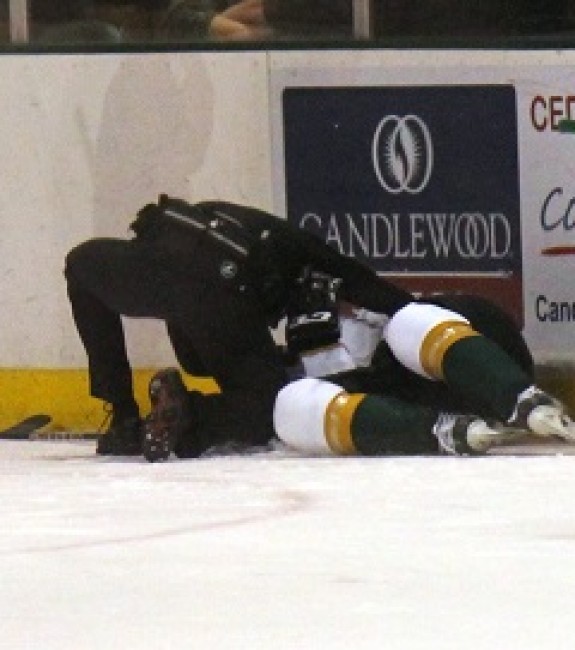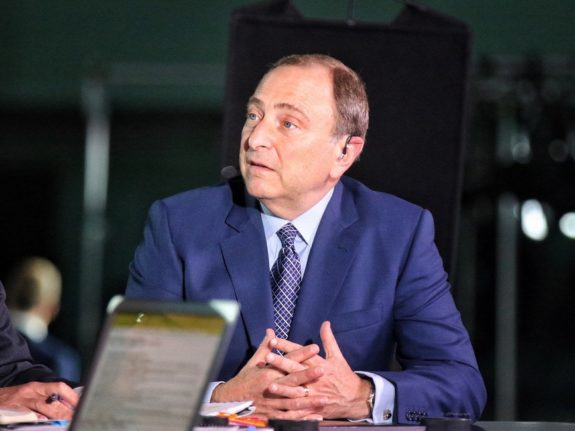On Monday, the National Hockey League announced they’ve reached a tentative settlement in a five-year-old brain injury lawsuit which began back in November of 2013. Over 100 former players (318 plaintiffs) brought the suit forth to the NHL after alleging the league did not do enough to warn players of the dangers of repeated head trauma and how to handle injuries to the head during their playing careers. The players held that the NHL should have provided more education on the matter so that they could then make better choices as it pertained to their futures.
In a statement released by the NHL, they announced the potential settlement had been reached “after months of court-ordered mediation.” They added:
“The NHL does not acknowledge any liability for any of Plaintiffs’ claims in these cases. However, the parties agree that the settlement is a fair and reasonable resolution and that it is in the parties’ respective best interests to receive the benefits of the settlement and to avoid the burden, risk and expense of further litigation.”
As Greg Wyshykski reports, the court documents list the settlement at $16,910,800.00, which after broken into a number of subparts cannot exceed $18.922 million. Ironically, Wyszynski also points out this settlement was reached an announced on the day Gary Bettman goes into the Hockey Hall of Fame.
The NHL settlement, according to docs: $16,910,800.00. Here's how it breaks down financially: pic.twitter.com/DHr6EuxqHA
— Greg Wyshynski (@wyshynski) November 12, 2018
Related: NHL Rumors: Skinner, Quenneville, Bruins, Kings, More
What’s Next for the Players?
Participation in the settlement is voluntary. Players can choose to accept and then split the financial total, or players could separately pursue personal injury claims. Those who accept will receive neuropsychological testing funded by the NHL, including transportation to medical facilities, up to $75,000 in medical treatment expenses for each person who tests positive on two or more of 13 cognitive/behavorial assessment exams, total cash payments of $6.996 million, broken down to $22,000 per individual and waived attorney fees ($6.95 million total).

In addition, players with additional needs can access a “common good” fund, into which more than $2.5 million was deposited. This will be available to any suffering players, not just those who sued or were part of the action against the NHL.
If not enough players choose to accept the deal, the NHL has retained “walkaway rights”, which is not uncommon for a major settlement like this. Plaintiff lawyer Charles Zimmerman did suggest that the players and the league would want to settle in this instance and “walk away rights” won’t come into play.
“I’m very pleased that we could accomplish something for the betterment of the players and the betterment of the game,” on Monday morning. “That was our goal and I think we achieved our goal.”
Related: The NHL and Gary Bettman: 25 Years of Progress and Controversy
What’s Next for the League
While some have compared this lawsuit to the one settled by the NFL years ago, there are some key differences. First, the NFL claimed responsibility whereas the NHL has not. The amounts handed out to the players are uniquely different but there’s still enough here that the NHL needs to take a good long look at their safety protocols moving forward.

The league already has a strict policy of pulling players from games if there is the concern of any form of concussion and while the players might not like the strictness of that policy, this lawsuit only goes to show that the NHL will need to continue with their testing and policies, if not improve them to avoid this sort of issue in the future and police competitive players from themselves.
Prior to this settlement, Bettman often tried to dismiss the claims and say the suit was without merit. He likely won’t be doing that any longer. That said, this settlement is basically his way of saying, ‘It’s not our fault but we’ll pay you to go away.’
Unfortunately, concussions in hockey is not about to go away and while this settlement does deal with the problem immediately facing the NHL, there’s a lot of work to be done to help keep the players safe in a game where concussions happen regularly.